County leaders seek greater coordination on migrants after border visit
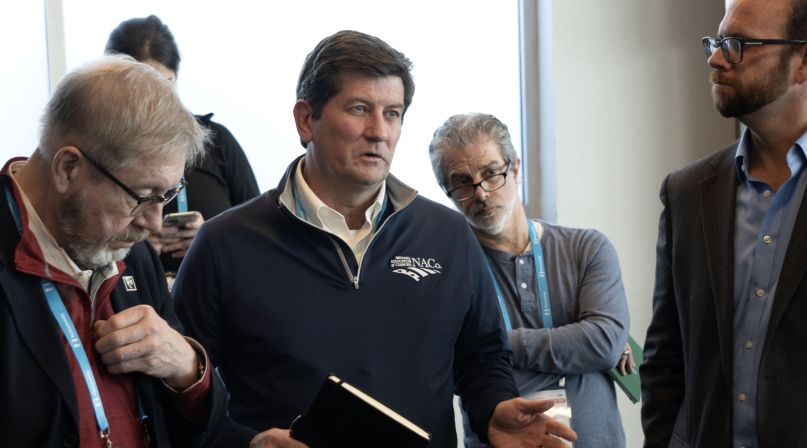
Key Takeaways
Scorch marks on the wall behind a circuit breaker illustrate the tenuous electrical system powering a makeshift shelter in Juarez, Mexico. The migrants living there kept the appliances turned off to avoid taxing the system.
A church there adapted its second floor to house up to three dozen people comfortably, but it’s hard to get comfortable when two smoke detectors trade chirps every 30 seconds, begging for new batteries. It’s considered a moderately good shelter by local standards, but life there alternates between anxiety and boredom. Anxiety because a year and a day ago, a fire in a migration center elsewhere in the city killed 40 migrants. Boredom because they may be waiting inside for months before their next move, and it’s risky to be out and about, where organized crime is rampant.
A 20-person group of county officials and staff taking a firsthand look at how the federal and El Paso County governments cooperate to manage an elevated number of foreign nationals requesting asylum in the United States and often wind up in their counties. It was the first border trip undertaken by NACo’s Immigration Reform Task Force since September 2019.
The shelter tour drove home the reality that many of their often-unwitting new constituents have faced over the past year. They took on monthslong journeys, often on foot, mostly from hostile homelands in Central America and South America, facing predators, hostility and illness along the way. An increasing number of families have reached the United States over the last six years, but rather than evade the U.S. Border Patrol, they surrender, requesting asylum and starting the next part of their journeys.

Although many components comprise the immigration system — refugee resettlement, undocumented immigrants who overstay their visas or slip between ports of entry, the lawful permanent resident status (also known as a “green card") and more — the trip focused on the asylum process by which migrants seek U.S. protection.
Migrants’ experiences vary, as a Salvadoran woman who has been in the Juarez shelter for five months would relate, but once they receive an appointment through Customs and Border Protection’s scheduling app while in Central Mexico or Northern Mexico, they can see an opening to reach the United States, which will include what is currently an approximate four-year wait to see an immigration judge. The end of 2023 saw a backlog of 3.1 million immigration cases, up from 400,000 10 years prior. Analysis by the Brookings Institution think tank found that over that period, the share of immigration cases resolved each year fell by half. And in the recently passed Fiscal Year 2024 appropriations packages, the Executive Office for Immigration Review, which handles immigration court proceedings, received a $16 million cut for a total of $844 million in funding for FY24.
Learn more
One of the problems with this process as it exists now is a scattershot approach to resettlement and gaps in intergovernmental communication. While some migrants have family and friends willing to support them, many do not. On top of that, federal regulations governing migrants’ eligibility for work and Texas Gov. Greg Abbott’s efforts to send migrants to cities like New York, Chicago and Denver on free bus trips has led to migrants ultimately being sent where officials aren’t expecting them and may not have the resources to meet their needs.
Abbott’s buses have sent more than 180,000 migrants to New York City, where their presence pressures the city’s right to shelter law; Mayor Eric Adams, in turn, sends them to upstate counties.
“I have a homeless epidemic going on since COVID, I’ve got an opioid epidemic,” said Albany County, N.Y. Executive Dan McCoy. I have 738 women who are single, living in our shelters with 129 kids under the age of 18. I have women and children living on the street in cars…I don’t have enough space or capacity to take on more.”
Albany County, home to almost 315,000 residents, has seen the greatest number of migrant arrivals from New York City, with a current population of roughly 700.
“Let’s take care of these people, let’s take care of our people too, but let’s do it in a coordinated effort,” McCoy said. “We can’t overcrowd a system that’s been overcrowded, underfunded and is blowing apart at the seams.”

A destination county
The City and County of Denver, Colo. has received more than 40,000 migrants since December 2022, and spent more than $60 million housing and feeding them. On a per capita basis, Denver has taken in the largest number of migrants among American cities.
At the migration’s peak from December 2023-January 2024, Denver was housing more than 5,000 people in seven shelters.
“There were some days 11 buses would just drop people off haphazardly throughout Denver,” said Evan Dreyer, deputy chief of staff to Mayor Mike Johnston. “We are now trying to pivot to something that looks more like a sustainable, ongoing program, now that we aren’t constantly dealing with a crisis.”
While most of the county delegation to the border represented counties that were third points along the migrants’ path; Dreyer’s Denver was one of the top three destinations for Texas-chartered buses.
The Denver housing market, already dealing with population growth (35,000 newcomers from July 2020 to July 2023) from elsewhere in the United States, was stressed and the city and county tried to fashion their own transportation plan to keep people moving.
Since then, approximately half of those 40,000 migrants have been transported elsewhere throughout the United States, and the 250-300 arrivals per day from Texas has slowed to 50. The shelter network has consolidated to a single hotel.
“There are some things that are not necessarily in our control, including big surges, but we’re trying to create a program that focuses on trying to help newcomers with asylum and work authorization applications, offers case management and housing assistance,” Dreyer said. “A big part of this was acknowledging that this is going to be an ongoing part of what city government needs to do so we don’t end up with people out on the street.”

The big tent
The shift away from the majority of migrants being single Mexican males coming to the country to work and toward migrants seeking asylum has prompted a structural response from Customs and Border Protection, which erected a pair of temporary processing facilities for migrants who surrender to the Border Patrol near El Paso. The enormous tents on 64 acres have sheltered as many as 7,000 migrants at a time, but when the county officials toured, it was down to a more manageable 2,500. Between 600-800 contractors work over each of three shifts daily. Fresh water is trucked in, and wastewater is trucked out, and generators power the climate-controlled facilities.
Inside, migrants are given health screenings, showers, meals and fresh clothes. Contractors take fingerprints and DNA samples. They are inspected for tattoos that would indicate gang affiliations in their home countries, have their identities corroborated and criminal background checks performed, and those accused of violent crimes are flagged for return to their countries of origin. Others, sometimes without a criminal record, are assigned ankle tracking bracelets. They are interviewed to determine credible fear of harm if they are returned home. Most migrants stay for three days maximum before being released on their own recognizance, to the tune of 1,000 people released per day.
Upon release, families generally go to nonprofit service providers and single men and women go to the El Paso County’s Migrant Support Services Center before most leave El Paso County, with 70% headed to the East Coast, according to CBP interviews.
All of that adds up to $1.2 million a day.
Chautauqua County, N.Y. Executive PJ Wendel worried the ad hoc approach to managing the processing facility has led to inefficient federal spending. Personnel reported no centralized planning process while detailing operations.
“Are we helping or are we just throwing money at the situation?” Wendel asked.
Oneida County, N.Y. Executive Anthony Picente noted that a lot of the processes at the screening facility and El Paso County’s Migrant Support Services Center seemed duplicative, which he thought could be the result of poor data sharing.
Hearing about the health screenings that migrants receive, Durham County, N.C. Commissioner Wendy Jacobs worried that their mental health needs were being neglected, which could be harmful later on.
“We know they’ve suffered a lot of trauma along the way to America,” she said. “How do we make sure that people here in our communities are getting the health care they need? Because it’s not just a humanitarian issue, we want to ensure that that people coming to our community can become, you know, functional members of our community.”
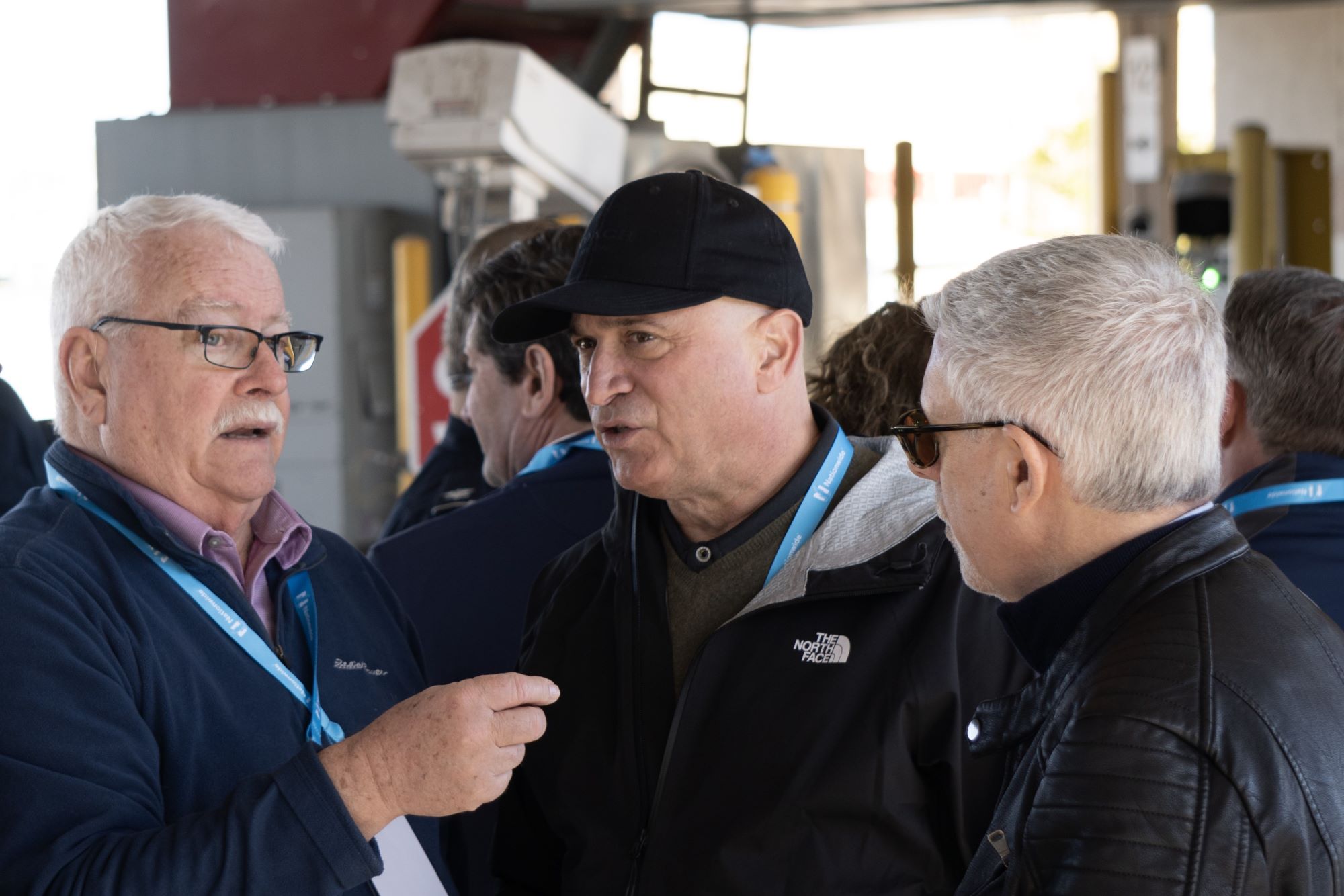
Breakdowns
Intergovernmental coordination seems to many county officials to be a victim of communication breakdowns. Some may be due to the nature of the busing programs employed by Abbott and Adams.
“We have about 100 people and New York City never gave us their names, birthdates, country of origin, their immigration status or when they have their appointment with a judge,” said Orange County, N.Y Executive Steve Neuhaus. “It would be very helpful to have.”
Neuhaus found out who three of his arrivals were after two Haitian migrants died and their roommate, also a migrant, was charged with their April 1 murders.
Both McCoy and Wendel suggested Adams or New York Gov. Kathy Hochul send a representative to El Paso to head off people who want to go somewhere besides New York, particularly if their ultimate destination is nowhere close.
“If their end point is Tennessee, it doesn’t make any sense for them to get on a bus up to New York,” Wendel said, acknowledging that many likely don’t know U.S. geography enough to make an informed decision.
The bipartisan border security package that failed to move in the Senate in February was lauded as one of the strongest attempts for comprehensive immigration reform legislation in several years. If passed, the bill would have provided $933 million for the Shelter and Services Program, which provides funding to counties and nonprofits to manage migrant influxes, $723 million to hire additional CBP officers, Border Patrol agents and support Border Patrol overtime and $424.5 million for DHS to acquire new innovative non-intrusive inspection equipment at ports of entry. The bill also would have temporarily granted DHS authority to prohibit the entry of certain populations between ports of entry after migrant encounters exceed certain thresholds, raise the asylum screening standard and consolidate multiple initial asylum screenings into one interview, which was expected to significantly decrease the number of asylum claims approved.
Barring a dramatic reduction in asylum claims, counties will likely be left with the tools they currently have to seek to meet migrants’ needs until the next Congress, albeit with a $150 million reduction in the Shelter and Services program, which reimburses local governments for migrant-related expenses, as a condition for the deal to fund the federal government for the rest of the fiscal year.
NACo’s Board of Directors passed a resolution at the Legislative Conference urging Congress and the president to shorten the work authorization waiting period, allowing asylum seekers to support themselves and contribute to their local economies sooner.
In addition to the processing center and Juarez shelter, county officials toured the Paso Del Norte Port of Entry, the border wall at the Anapra Crossing in Doña Ana County, N.M., the El Paso County Migrant Support Service Center, an El Paso church that serves as a shelter and, in Juarez, the Chihuahua State Council on Population Comprehensive Care Center for Migrants.
Neuhaus thinks the county officials who made the trip came away with a deeper and more comprehensive understanding of the situation than either of the presumptive major party presidential candidates during their recent visits.
“I think we’ve got a very unique look at the border and it gave us a good perspective to share with our members of Congress and the public,” one that transcends the dominant narratives around border politics, he said, adding “people saying ‘Well, if the Republicans passed the bill, the murders wouldn’t happen,’ or ‘If Biden would just arm the National Guard and have them shoot anybody who comes over the border…’ that type of rhetoric from both sides is the reason why nothing is happening,” with policymaking.
Jacobs has already seen her experience contribute to a deeper involvement in immigration-related policymaking. Her social media posts about her trip caught the attention of a local faith-based resettlement immigration advocacy organization, which invited her to participate in meetings with members of North Carolina’s congressional delegation on a panel later in April.
Wendel saw the trip as a statement that counties could make in the face of the immigration trend. His county of 127,000 is home to roughly 100 migrants.
“The question is, why did we go down there when this is a federal problem?” he said. “When John F. Kennedy was denouncing communism and the spread of communism, he didn’t just stay in the White House, he went to the Berlin Wall,” he said, evoking Ronald Reagan’s challenge to Mikhail Gorbachev and George W. Bush’s address from the ruins of Ground Zero.
“We were there saying, ‘This needs to stop,’ and even if it’s a small voice, it’s still a voice right at the heart of the problem.”
But on the ground, while talking with children who were free to play for the first time, possibly in months, at an El Paso church shelter, “Esteban” Neuhaus, as he introduced himself, heard unvarnished hope.
“I asked them what they wanted to see in America,” he said. “They said they want to see the Statue of Liberty.”
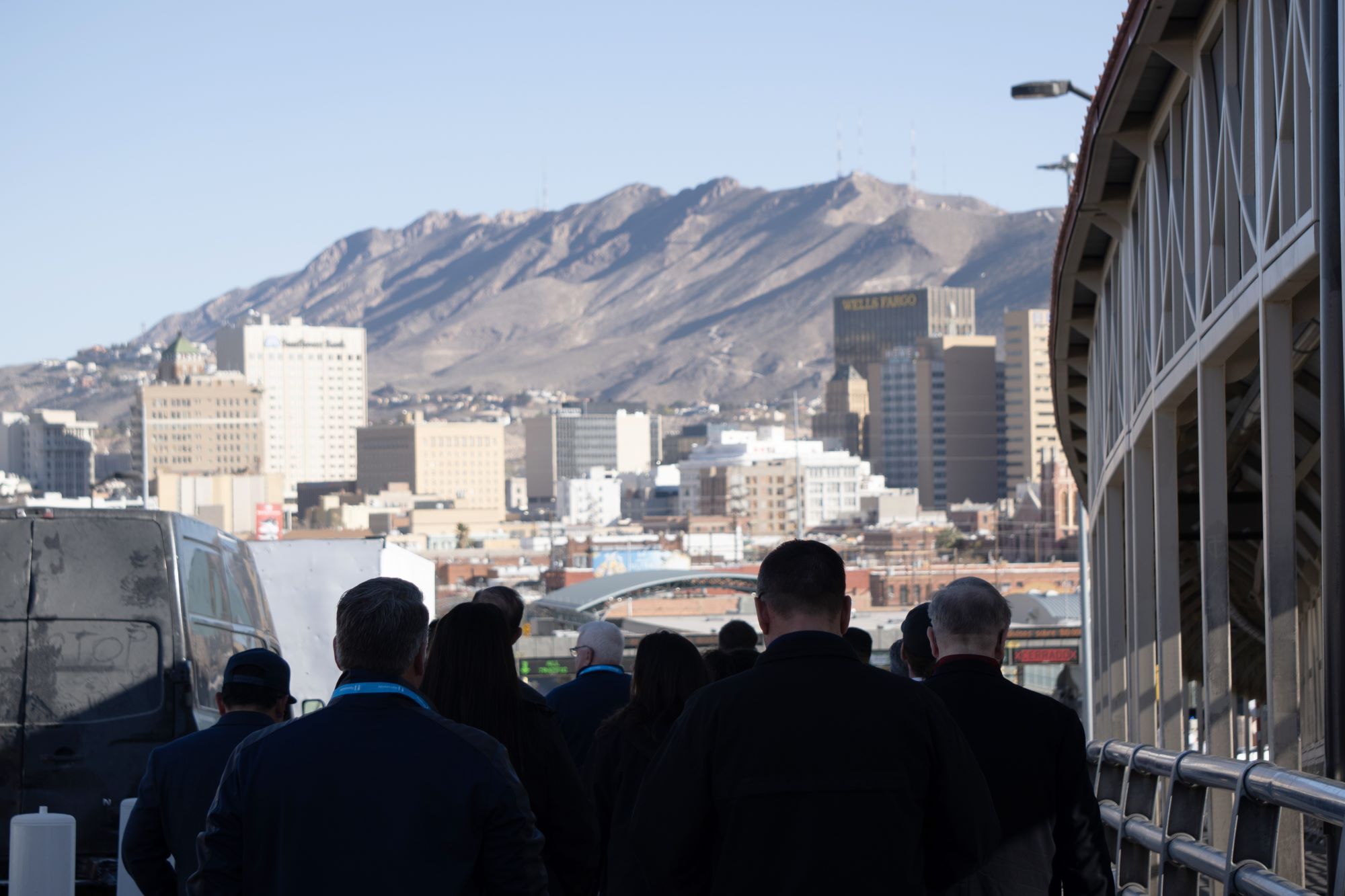
County News
County officials tour border, see immigration practices firsthand
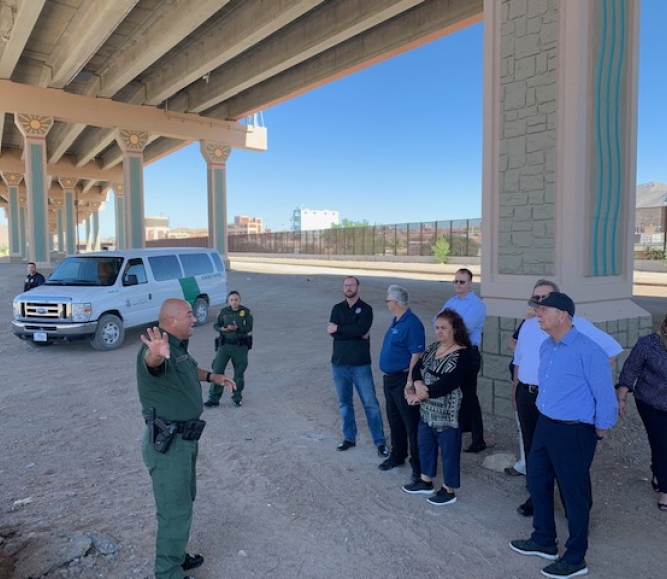
Related News
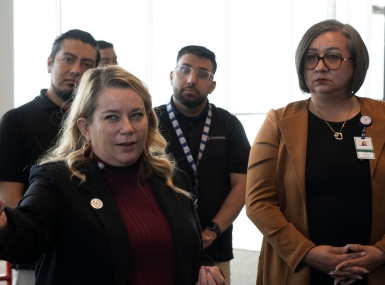
El Paso County, Texas helps migrants on their way
Though they don't often stay more than a day, asylum seekers receive care and services from El Paso County, Texas before they leave for their next destination.

L.A. County fends off homelessness with an assist from A.I.
A predictive model pulls data from six county departments to create a list of the county’s most vulnerable population — people who frequently show up in the county’s criminal justice and hospital systems and who access benefits like SNAP.

